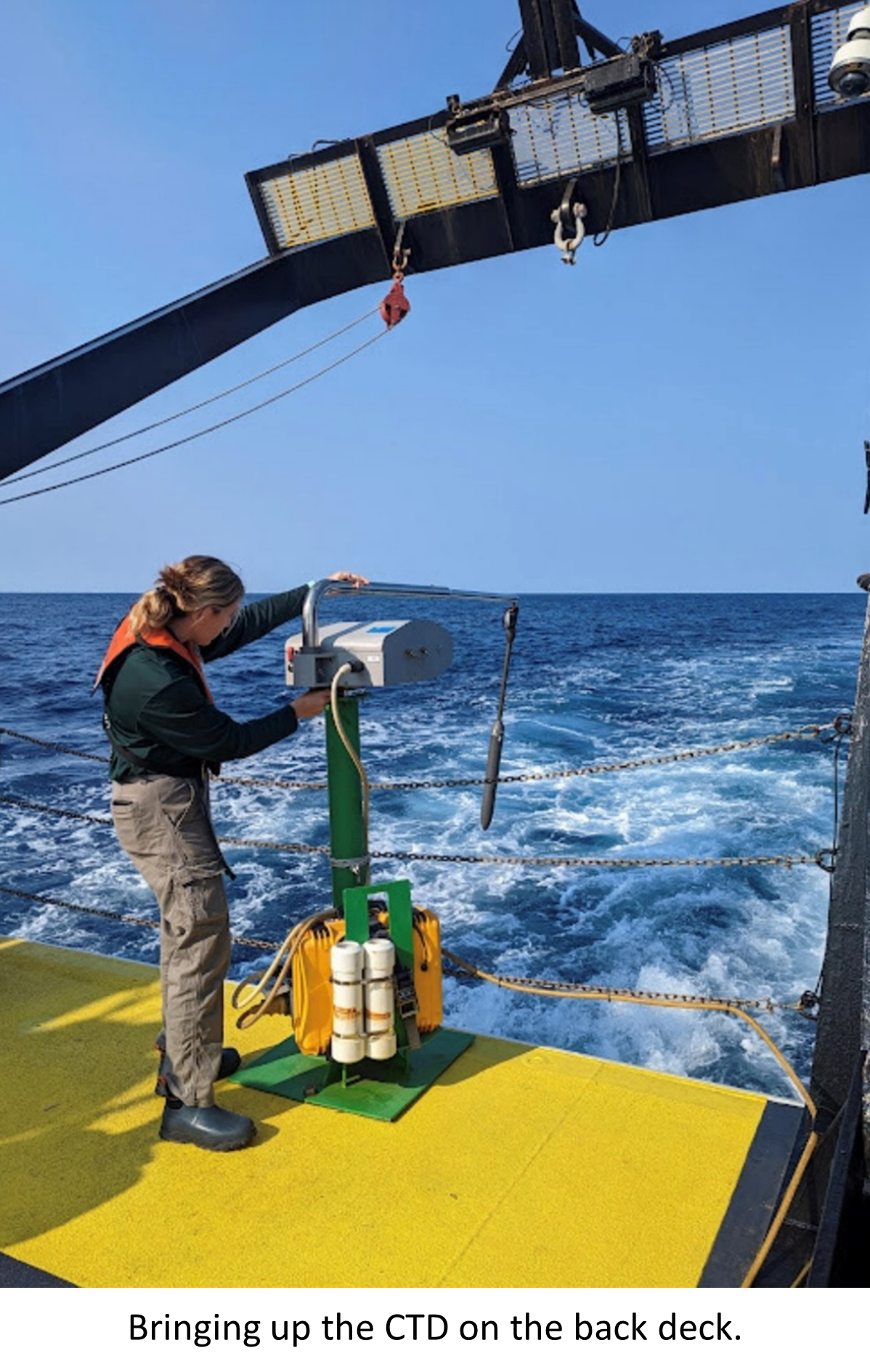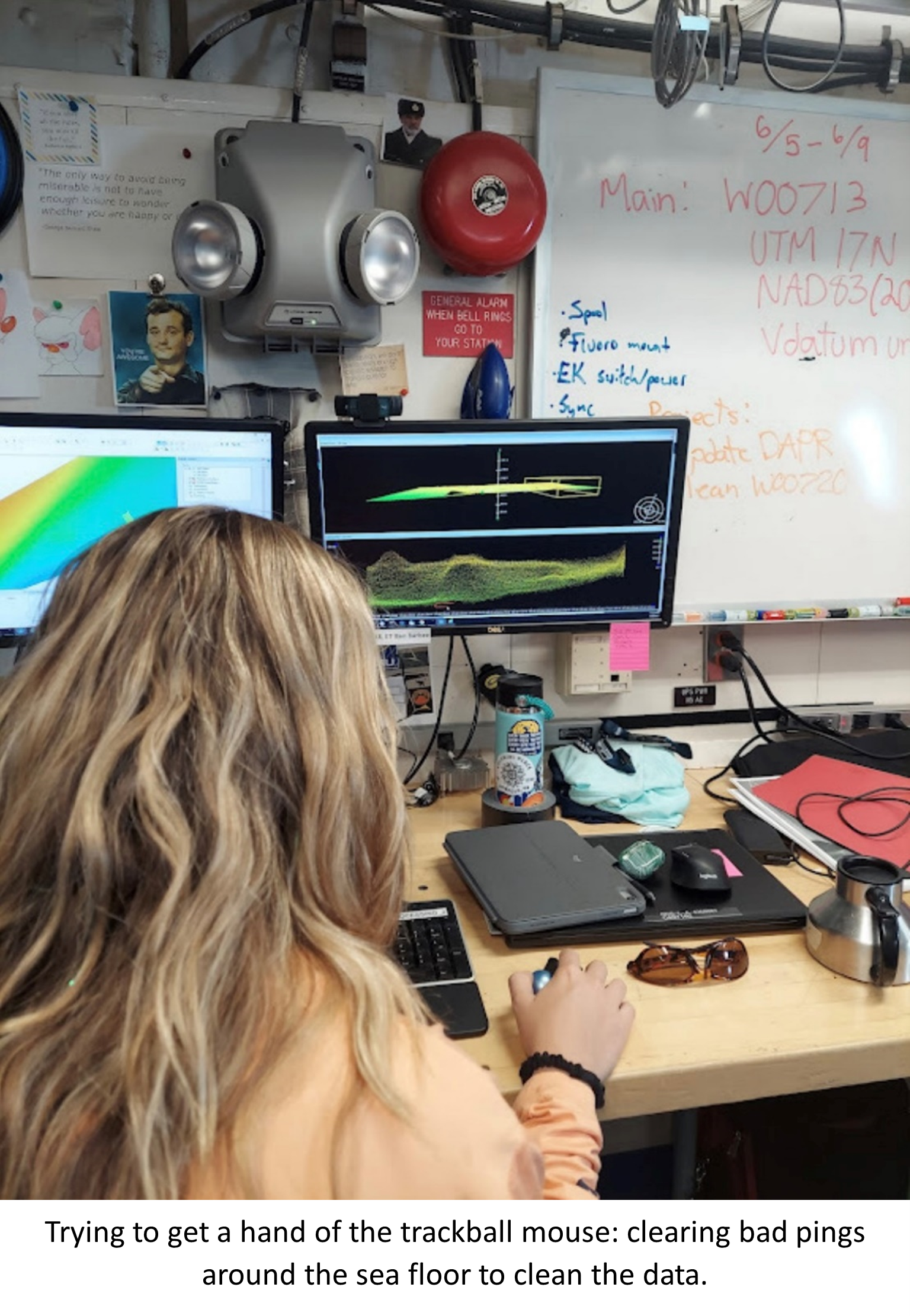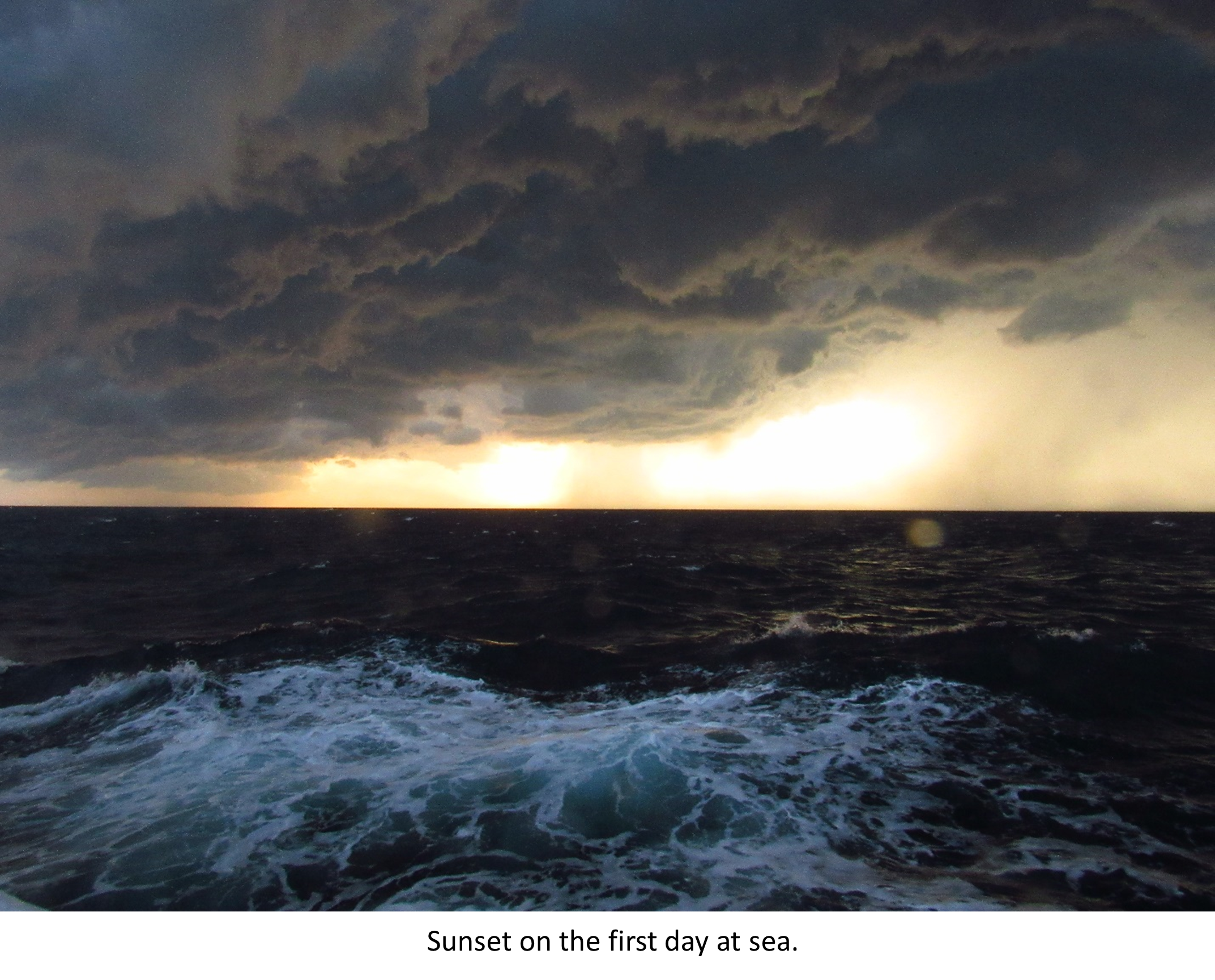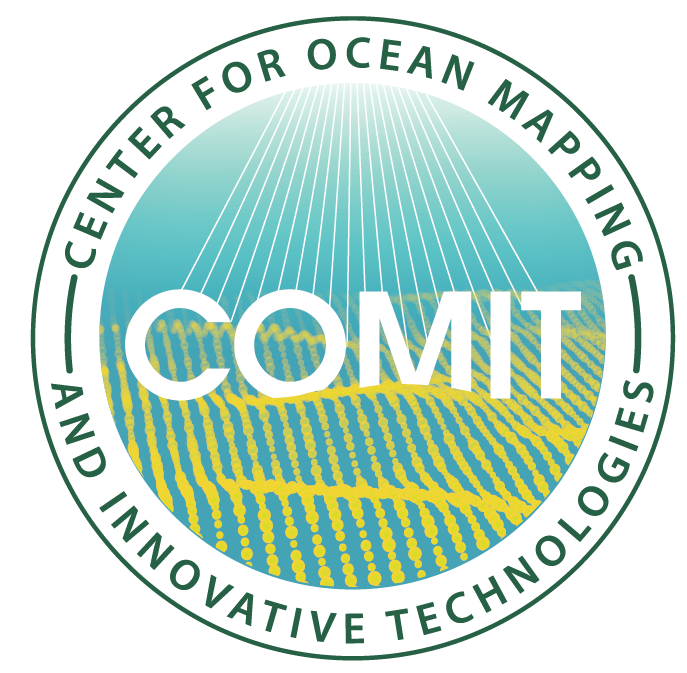Written by: Samantha D’Angelo (Undergraduate Intern & USF Student)
Hello all!
When presented with the opportunity to engage in an oceanic expedition full of hydrographic mapping I could hardly contain my excitement. How often do you get to experience firsthand how to work with mapping in the field as an undergraduate student? And how often is it with the National Oceanic and Atmospheric Administration aboard a 186-foot vessel in the Atlantic? I was so excited, in fact, that I wacked my head during loading when I got to the boat and almost could not go (sorry Julie about my paperwork).
Before I dive into my voyage, I wanted to write a little about myself and how I got here. I am an undergraduate student at the University of South Florida (USF) and an intern with the USF College of Marine Science’s Ocean Circulation Lab. While my work is mainly physical oceanography, focused on currents, circulation, and water quality observations (on buoys and range towers), I also work alongside COMIT on the SUBGEO GPS spar buoy project. The goal of the SUBGEO project is to better understand subduction processes in regions prone to earthquakes and tsunamis and better prepare the public for these catastrophic phenomena by detecting movement of the seafloor and provide earlier warning. Before sailing with NOAA, I did not know much about single or multibeam bathymetry. I could read a sonar fish-finder on a boat, but that was the extent of my knowledge before going to sea.
What I enjoyed most about this whole experience was that newbies like myself could learn from our peers in an “all-questions welcome” atmosphere. The science party included undergraduates (like myself), graduate students, post docs, and career scientists from the College of Charleston, University of New Hampshire, and the University of South Florida. There was also the highly educated and dedicated group of survey techs and scientists from NOAA. Throughout the duration of the cruise, each member of the science party was assigned an 8-hour shift between 4am and midnight. Luckily, I was assigned the 8am – 4pm slot, but I would find myself in the wet lab well past my shift learning as much as I could. While on duty, I was able to learn a multitude of different mapping techniques: uploading data into mapping software (CARIS and Qimera), mapping the line segments that the vessel would follow to get a good rendering of the seafloor, bringing in the Conductivity, Temperature and Depth rosette (CTD) like an absolute boss (Thanks Sam!), and how to hold my own in intense UNO games.

While there was downtime for fun and games, there was also a lot of learning to be had with the dry lab being the main hub of our mapping operations. There could be at least 8 people in here working at a time, so information was always flowing! Everywhere you looked there was a computer monitor with something different displayed. If there was anything happening that you wanted to know about, all you had to do was walk over and the person on the computer was more than willing to explain what they were working on. The science party as a whole was very patient and knowledgeable, making my experience feel less daunting. By the end of the cruise, I walked away with sufficient knowledge in reading and uploading data to Qimera, understanding how to identify unique features, and highlight anomalies. I felt excited with my newfound knowledge and was able to perform some actions on my own.

I thoroughly enjoyed the science aspects of the cruise, but I equally enjoyed connecting with different members of the science party and the Nancy Foster crew. When I wasn’t working, you could find me playing a card game, working on a puzzle, or getting destroyed in backgammon. These games were used to kill time, but more importantly allowed us all to get to know one another. Friendships developed and future career aspirations were shared. Even if we were just watching a movie or watching the stars at night, these are memories I will cherish forever. I was able to connect with people from near and far that I would never have met if not given this opportunity. I am beyond grateful to COMIT and the University of South Florida College of Marine Science for this chance to step out of my wheelhouse and learn something new and exciting. I gained a better understanding of geology and hydrography and how these data not only tell us about the past and the future but also how we need to continue working to better understand the planet we love so much. The biggest take-away I have is to go out there and explore. There is so much yet to be discovered. Sometimes all it takes is a week at sea and you come back full of new perspectives and ideas.


Recent Comments